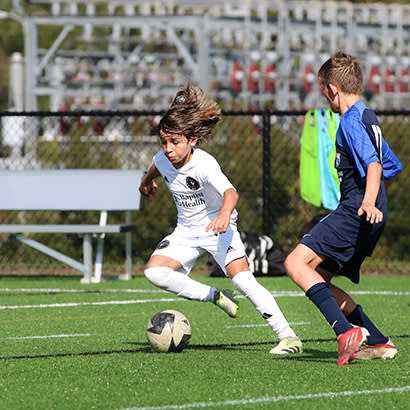
For an enhanced digital experience, read this story in the ezine.
With an estimated 60 million youth playing on sports fields nationwide every night, sports field managers face intense pressure to keep their play surfaces in top shape. Hillsborough County manages Florida’s largest sports field system with 40,000 youth playing per night on 270 fields. The intense use of these sports fields requires us to reach far into a bag of innovative and technical sports field management tools to keep play surfaces at their best.
The Play Surface
The foundation of any turf program lies in the ability to provide consistent irrigation. With cell-connected irrigation, you can change, add or delete schedules and adjust water windows from your desk. Add in a connected flow meter to get up-to-date notifications of head, zone and mainline leaks and issues.
Imagine a sensor that could report to you three of the most critical factors for turf growth: soil temperature, moisture and salinity. With an integrated soil moisture sensor, that same sensor could turn off the irrigation when soil moisture reaches your set saturation limit and email your leagues to inform them it may be too wet to play that night.
Access and Oversight
We have deployed hundreds of outdoor digital Bluetooth smart locks at our fields to limit access to approved users only. In addition to adding and deleting users from your desktop, the locks include a free phone app, record tamper alerts, have a two-to-three-year battery life and allow you to issue immediate one-time-use codes over the phone.
Cell-configured sport lighting controls give leagues and renters the power to turn on lights from their phone nightly, eliminating all night lights, lights on in the rain, and lights on when practice or games are canceled. The systems give sports field managers the power to monitor use, set time limits for league use, add or delete users at will, schedule light events, get reports on usage, receive immediate alerts on power and light system outages, and so much more.
Equipment
For the past several decades, the standard for infield clay maintenance was the prototypical three-wheeled groomer. A few manufacturers have raised the game with infield groomers made for clay that are larger and add the ability to move and grade large amounts of clay. Widely available autonomous mowers/machines mow; blow snow, leaves and debris; and more aided by GPS and/or ground-mounted antennas. You will need to decide for yourself what level of trust you and the public have in and around these machines. Having trialed four types of mowers, we have found the cost of ownership and maintenance has gone down and, depending on the layout and fencing of fields, has come very close to the contracted cost of a field.
While mowing and treatment of fields by drone is a ways off, improved field evaluation by drone-mounted near infrared cameras and field lining robots is here today. Near infrared cameras can “see” turf and plant damage, drought, and wear before the human eye. Several companies will now “fly” your fields and provide a software-processed, image-prioritized report with hot spots identified.
Greg Brown, BCMA, CPRP, CPSI, FCLD, is Parks and Athletics Services Manager at Hillsborough County (Florida) Parks and Recreation.

